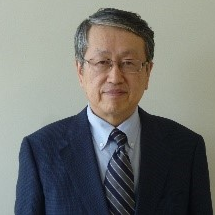Matricellular Proteins in Human Diseases
A special issue of International Journal of Molecular Sciences (ISSN 1422-0067). This special issue belongs to the section "Molecular Pathology, Diagnostics, and Therapeutics".
Deadline for manuscript submissions: closed (31 January 2023) | Viewed by 6960
Special Issue Editors
2. Emeritus Professor, Tohoku University, Sendai 980-8577, Miyagi, Japan
Interests: dengue; malaria; leptospirosis; HIV; tuberculosis; inflammation; galectins; osteopontin
Special Issues, Collections and Topics in MDPI journals
Interests: HIV; AIDS; retrovirus
Interests: mechanisms of granuloma formation in tuberculosis; mechanisms of acquisition of higher virulence in mycobacteria
Special Issue Information
Dear Colleagues,
In 2000, Bornstein proposed that there was a family of secreted extracellular matrix (ECM) proteins that could be linked through their common functionality. He termed these proteins “matricellular” to highlight their influence on cell–matrix interactions. Matricellular proteins (MCPs) interact with cell surface receptors (such as integrins) and can bind to growth factors. On the basis of this definition, several proteins have now been identified as MCPs, including connective tissue growth factors, thrombospondin tenascins, osteopontins, galectins, SPARC, and SPARC-like proteins, CCN1-6 family of proteins, periostin, fibulins, Nov (CCN) proteins, and MMPs.
Matricellular proteins are expressed at high levels during development and in response to injury, and bind to many cell surface receptors, ECM proteins, growth factors, cytokines, and proteases. They generally induce the de-adhesion of normal cells, which contrasts the function of adhesivity of most ECM proteins.
MCPs play critical roles in cardiovascular and skeletal development, injury repair, fibrotic diseases, and cancer. In this Special Issue, therefore, the role of these proteins in tumor initiation, growth, invasion, metastasis, and angiogenesis will be included. Further, their potential as biomarkers and therapeutic targets should be presented. The plasma levels of matricellular proteins were found to reflect the disease severities in various infectious diseases in COVID-19 patients, probably because matricellular proteins are one of the most functional extracellular proteins that are associated with inflammatory edema. MCPs are also associated with cardiovascular events, independent of conventional cardiovascular risk factors. Thus, MCPs can also be a therapeutic target for cardiovascular diseases. Furthermore, these proteins are known to be involved in the central nervous system, skeletal muscle diseases, and interstitial diseases. In this Special Issue, the roles of MCPs in various human diseases will be presented to disclose their true faces.
Prof. Dr. Toshio Hattori
Dr. Yosuke Maeda
Dr. Takashi Matsuba
Guest Editors
Manuscript Submission Information
Manuscripts should be submitted online at www.mdpi.com by registering and logging in to this website. Once you are registered, click here to go to the submission form. Manuscripts can be submitted until the deadline. All submissions that pass pre-check are peer-reviewed. Accepted papers will be published continuously in the journal (as soon as accepted) and will be listed together on the special issue website. Research articles, review articles as well as short communications are invited. For planned papers, a title and short abstract (about 100 words) can be sent to the Editorial Office for announcement on this website.
Submitted manuscripts should not have been published previously, nor be under consideration for publication elsewhere (except conference proceedings papers). All manuscripts are thoroughly refereed through a single-blind peer-review process. A guide for authors and other relevant information for submission of manuscripts is available on the Instructions for Authors page. International Journal of Molecular Sciences is an international peer-reviewed open access semimonthly journal published by MDPI.
Please visit the Instructions for Authors page before submitting a manuscript. There is an Article Processing Charge (APC) for publication in this open access journal. For details about the APC please see here. Submitted papers should be well formatted and use good English. Authors may use MDPI's English editing service prior to publication or during author revisions.
Keywords
- infectious diseases
- COVID-19
- lung
- cardiovascular diseases
- cancer
- neurological disorders
- ECM
- MCPs







